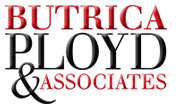
Calculating corporate estimated tax
June 9, 2022
Planning for Virtual Currency
June 10, 2022
Planning for Small Businesses
If you own a business, consider the following strategies to minimize your tax bill for 2022.
Section 179 Expense and Bonus Depreciation. If your business plans to purchase new or used machinery or equipment prior to year end, you may be able to expense the entire cost in 2022. Under Section 179, taxpayers can elect to expense up to $1,080,000 of qualified purchases, subject to taxable income limitations. Alternatively, your business can take advantage of 100% first-year bonus depreciation. Unlike the Section 179 deduction, claiming 100% bonus depreciation is not limited to taxable income, although another limitation could apply. Many factors can influence this decision, including current and future tax rates. With the possibility of higher rates in 2023, the best choice may be to wait and see if you are going to be subject to a higher tax rate before you acquire assets, if it is feasible to hold off. Also, under current law, 100% bonus depreciation is scheduled to be reduced to 80% for property placed in service in 2023. If you’re thinking of acquiring business property between now and the end of the year, we can help you navigate that decision. Please keep in mind we never want tax savings to be the only factor in the decision of when to acquire assets.
Retirement Plan Contributions. Setting up a qualified retirement plan for your business allows you to make deductible contributions for 2022 while allowing the earnings in the plan to build up without taxation until the funds are withdrawn. Selecting the best qualified retirement plan will depend on the facts and circumstances of your business, including your level of income and whether you have employees. Types of available plans include defined benefit, defined contribution, one-person 401(k), Simplified Employee Pension (SEP), and SIMPLE IRAs. Each type of plan has advantages and disadvantages that we will gladly discuss with you to determine which plan is the right fit for your business.
There are limits on the amount that may be contributed to a plan, depending on the type of plan. Defined contribution plans and SEPs have a maximum contribution amount of $61,000 for 2022, while one-person 401(k) plans are limited to $20,500 for elective deferrals made by the employee and $61,000 for combined employee/employer contributions, and SIMPLE IRAs are generally limited to $14,000. If you are age 50 or older, you also can make additional catch-up contributions of $6,500 for a one-person 401(k) plan or $3,000 for a SIMPLE IRA. Defined benefit plans can’t provide an annual benefit that exceeds the lesser of $245,000 or 100% of compensation for the three highest years.
One benefit of making contributions to a qualified retirement plan is that the contribution may not need to be made by the end of 2022. The employer portion of the contributions can sometimes be made as late as 10/16/23.
In addition to making current year deductions, you may be eligible for two tax credits. A small employer who starts a new retirement plan is eligible for a nonrefundable income tax credit of up to the greater of (1) $500 per year or (2) the lesser of $250 per eligible employee or $5,000 for the administrative and retirement-education expenses of adopting a new qualified defined benefit or defined contribution plan, a SIMPLE IRA plan, an annuity plan under 403(a), or a SEP. A second tax credit exists for small employers who include an auto-enrollment feature in a qualified plan. Eligible employers that include an Eligible Automatic Contribution Arrangement (EACA) in a qualified plan can claim an annual credit of $500 for up to three tax years. The credit also is available to employers who convert an existing plan to an automatic enrollment design.
Employing Family Members. Employing family members can be a useful strategy to reduce overall tax liability. If the family member is a bona fide employee, the taxpayer can deduct the wages and benefits, including medical benefits, paid to the employee on Schedule C or F as a business expense, thus reducing the proprietor’s self-employment tax liability. In addition, wages paid to your child under the age of 18 are not subject to federal employment taxes, will be deductible at your marginal tax rate, are taxable at the child’s marginal tax rate, and can be offset by up to $12,950 (your child’s maximum standard deduction). However, your family member must be a bona fide employee, and basic business practices, such as keeping time reports, filing payroll returns, and basing pay on the actual work performed, should be followed.
Business Meal Expenses. Normally, business meal expenses are limited to a deduction of 50% of the total costs. However, for 2022, food and beverages provided by a restaurant are allowed a 100% deduction. Taxpayers who use the per diem method may treat the entire meal portion of the per diem rate paid or incurred in 2022 as being attributable to food or beverages provided by a restaurant, making the meal per diem 100% deductible. As such, you may want to move any business meals originally planned for early 2023 into late 2022 in order to obtain the higher deduction.




